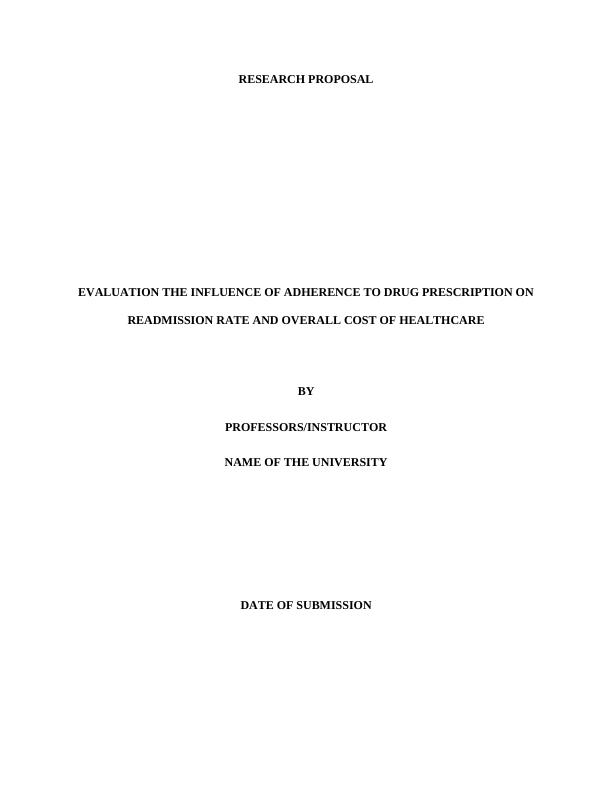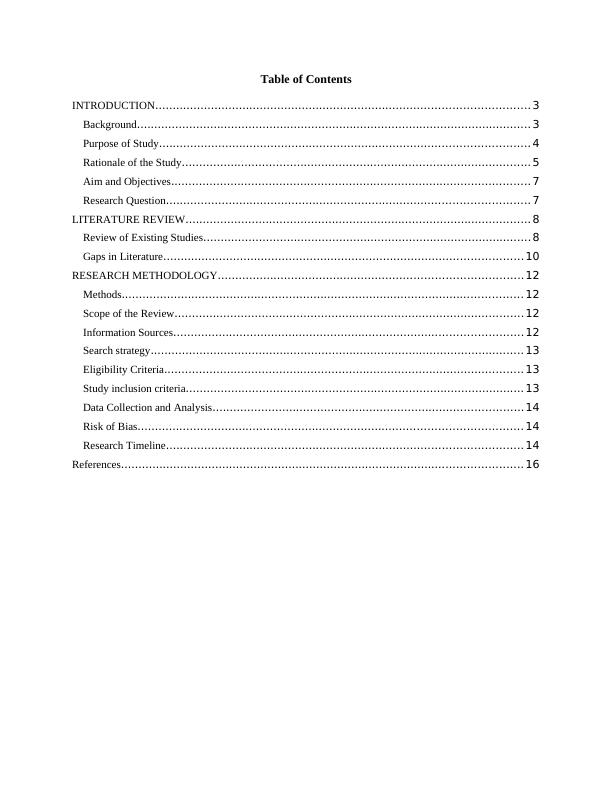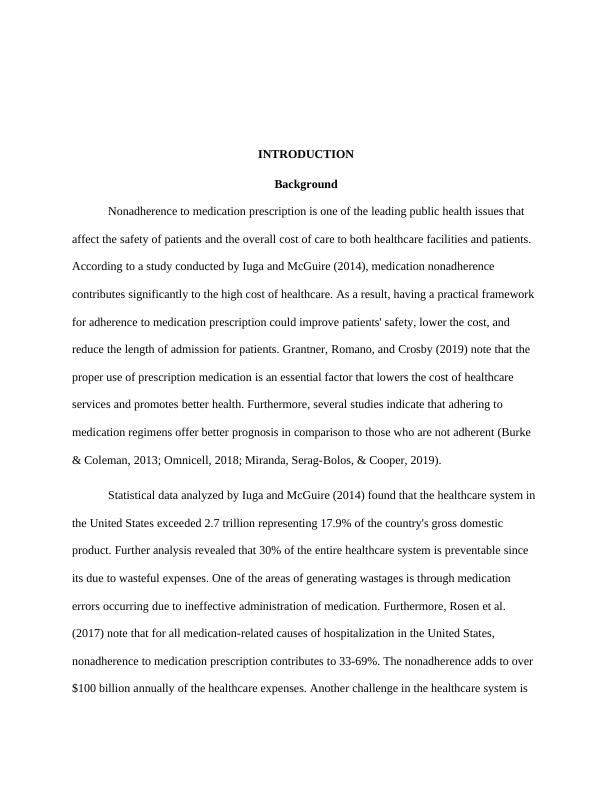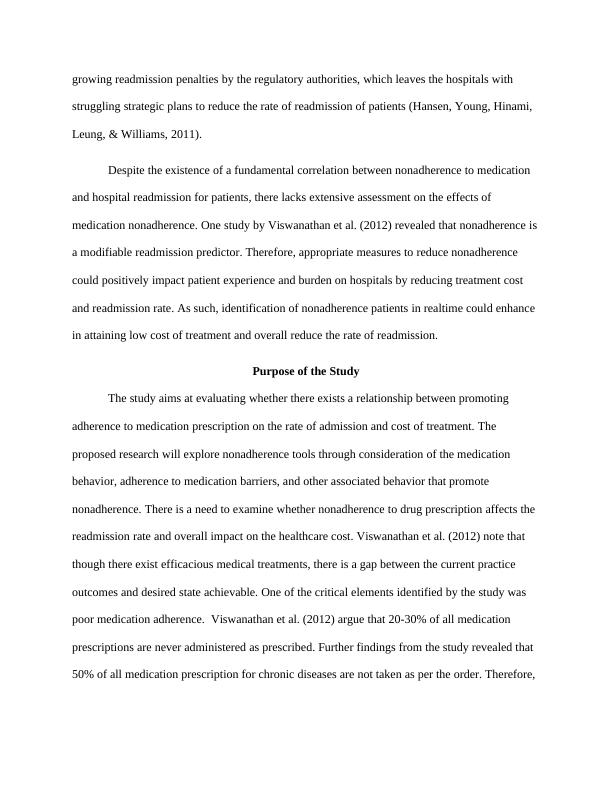Research Proposal Assignment 2022
Submit a full research proposal including introductory background, literature review, aims of research, and rationale/justification of research question or hypothesis.
18 Pages3891 Words26 Views
Added on 2022-10-17
Research Proposal Assignment 2022
Submit a full research proposal including introductory background, literature review, aims of research, and rationale/justification of research question or hypothesis.
Added on 2022-10-17
ShareRelated Documents
End of preview
Want to access all the pages? Upload your documents or become a member.
Digital Adherence System for Medication Adherence
|14
|3394
|131
Interventions to Enhance Adherence to Medications in Patients With Heart Failure
|9
|7032
|229
An Annotative Bibliography Justifying and Making Recommendation to William – a 75-Year Old Man with Worsening Chronic Heart Failure
|9
|1974
|379
Diabetic Education Consultation
|21
|6081
|63
Reducing Hospital Readmission among Heart Failure Patients
|11
|2586
|306
Non-Adherence to Bipolar Medication: Evidence Review
|11
|1817
|354




